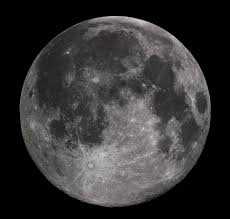Reports are emerging from Chengdu, China of replacing its street lights with a more luminous false moon. The Sichuan province’s capital city is planning to launch an “illumination satellite” by 2020. According to one source, while the moon will serve as a complement to the Earth’s moon, it will be eight times as luminous.
The dusky glow of the satellite would illuminate an area as small as six and as far as 50 miles. The large degree of variance is due to it being manually controlled in such a way that it could replace street light technology.
Wu Chunfeng, chairman for a private space contracting company known as “Casc,” seemed to have a great deal of interest in the project after a conference was held within the city just last week. Wu claimed that testing began on the satellite years ago and that the tech was not quite advanced enough to launch by the projected goal of 2020.
While it remains unclear whether the plan is being backed by Chengdu’s local government or the Chinese federal government. Casc is the leading contractor for China’s space program. Chinese media crits the idea to a French artist’s depiction of a mirrored necklace that could be harnessed to keep Paris sunlit forever.
While there are precedents for this sort of idea, the methodology and goals have been different.
- 2013 saw a trio of computer-guided mirrors installed aboveRjukan, Norway. These mirrors tracked solar movement in order to redirect sunlight into the town square.
- A team of Russian astronauts and engineers managed to launch a sunlight-deflecting satellite in the ’90s. This briefly allowed the hemisphere to become illuminated. This “Znmamya experiment” was intended to test the viability of saturating parts of the Earth with light comparable to several moons. While the lux count may have been embellished, the technology was proven sound.
- 1999’s Znamya 2.5 raised concerns about how such technologies might interfere with nocturnal creatures and astronomy. Germany’s technology minister commented that such concerns would be more appropriate for an April Fool’s joke. Znamya 2.5 misfired at launch and its creators were unsuccessful in funding a second attempt.
Chinese media was swift in assuaging concerned parties about the artificial satellite’s influence on nocturnal wildlife. Kang Weimin, director of Harbin Institute of Technology’s optics institute, said that the satellite’s light would be akin to dusk and insufficient to disrupt nocturnal life.






